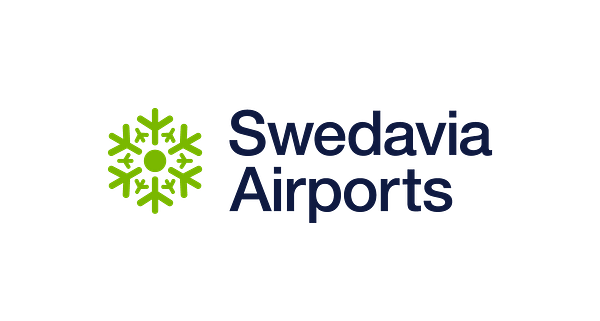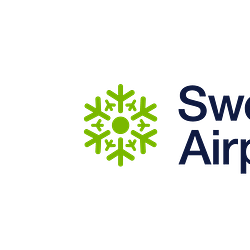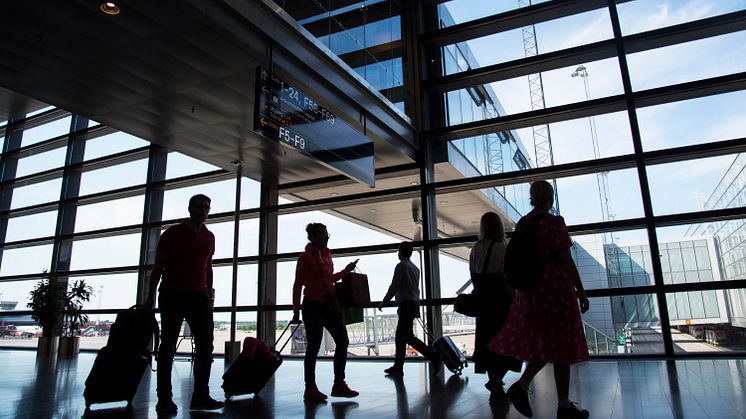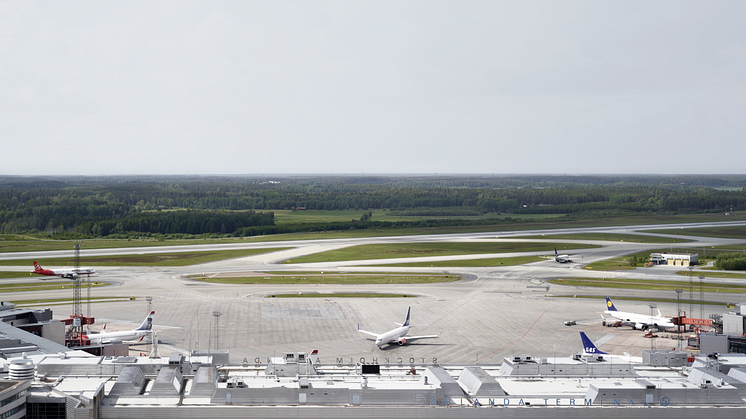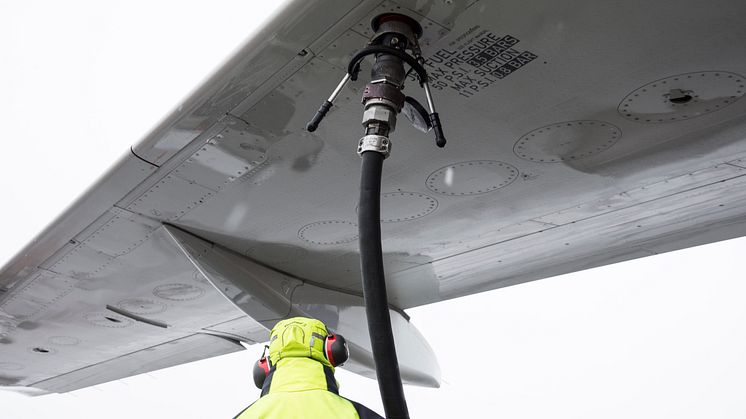
Press release -
Swedavia brings together different organisations in public tender for bio jet fuel
Each year since 2016, Swedavia has purchased about 450 tonnes of bio jet fuel, which corresponds to the amount used annually for the company’s flights for business purposes. With the current procurement, the volume will now increase to about 560 tonnes, which corresponds to about 45,000 domestic flights using 100 per cent bio jet fuel.
“It is incredibly gratifying that more organisations are showing an interest in our public tender for bio jet fuel. Together we want to show that there are concrete solutions that work for reducing the climate impact of air travel. Bio jet fuel actually reduces carbon dioxide emissions at the source of emissions,” says Jonas Abrahamsson, Swedavia’s chief executive.
The bio jet fuel is produced from used frying oil and reduces emissions of fossil carbon dioxide by up to 85 per cent compared to traditional jet fuel. The supplier is Air BP Sweden AB. The goal is to promote the most sustainable alternatives for bio jet fuel available in the market.
“The ambition is to carry out a new public tender each year and for more companies and other organisations to take part. We have the technology and the raw materials, and we know that both customers and producers view bio jet fuel positively. But today too little of the product is produced at too high a price. Our effort is therefore needed – one that we hope can stimulate demand and make large-scale Swedish production possible,” says Jonas Abrahamsson.
Swedavia has carried out the public tender and will also use about 450 tonnes of bio jet fuel in 2020. The three other organisations will share the remaining volume, about 110 tonnes. During the autumn, Swedavia started planning and sending out information to various organisations about the possibility of their taking part in the 2020 public tender for purchases in 2021.
The investment in bio jet fuel is part of Swedavia’s strategy to work for the climate change transition of the aviation industry and for fossil-free air travel by 2045. Swedavia also works actively to reduce fossil emissions from its own operations. All of Swedavia’s airports shall have zero fossil emissions from their own operations by the end of 2020.
Facts about the public tender
- The public tender was carried out by Swedavia, with the result being an agreement for 2020.
- Systembolaget, SOS Alarm and the 2030 Secretariat will purchase fuel based on the tender agreement.
- 450 tonnes will go to Swedavia, and the other organisations will share the remaining 110 tonnes
- The bio jet fuel is purchased as a service and is used for refuelling at a number of Swedavia’s ten airports. The fuel actually reduces carbon dioxide emissions at the source; in other words, this is not a carbon offset.
- Air BP is the supplier of the bio jet fuel. The product is certified and produced by used cooking oil by Neste in Finland.
- Under current fuel requirements, the bio fuel is mixed with traditional fuel and is used with existing aircraft technology and infrastructure at airports.
Facts about Swedavia’s environmental work and targets
- Swedavia’s own operations at all ten airports shall be fossil-free by the end of 2020, a target that will be achieved in part by investing in renewable fuels and electrifying the company’s ground vehicles and equipment.
- In 2025, five per cent of all fuel used for refuelling at Swedish airports shall be fossil-free.
- The Swedish aviation industry has agreed on a road map for fossil-free air transport, under the initiative Fossil-Free Sweden. The goal is for Swedish domestic air transport to be fossil-free by 2030 and for all flights taking off in Sweden to be fossil-free by 2045, in line with international climate targets. This shall be achieved through energy efficiency improvements, renewable jet fuel and electrification.
- Swedavia purchases bio jet fuel for the company’s flights for business services corresponding to 450 tonnes of fuel annually.
For further information, please contact:
Swedavia’s press office at tel. +46 (0)10-109 01 00 or press@swedavia.se.
Systembolaget’s press office at tel. +46 (0)70-245 00 47 or press@systembolaget.se
SOS Alarm’s press office at tel. +46 (0)8-205 307 or press@sosalarm.se
The 2030 Secretariat, contact Jakob Lagercrantz, CEO, +46 (0)708 173 808 or jakob@equest.se
Topics
Categories
Swedavia is a State-owned group that owns, operates and develops ten airports across Sweden. Our role is to create the access Sweden needs to facilitate travel, business and meetings – in Sweden, in Europe and around the world. Safe, satisfied passengers are the foundation of our business. Swedavia is a world leader in developing airports with the least possible environmental impact. The Group has revenue of over 5.7 billion Swedish kronor and some 3,100 employees.
